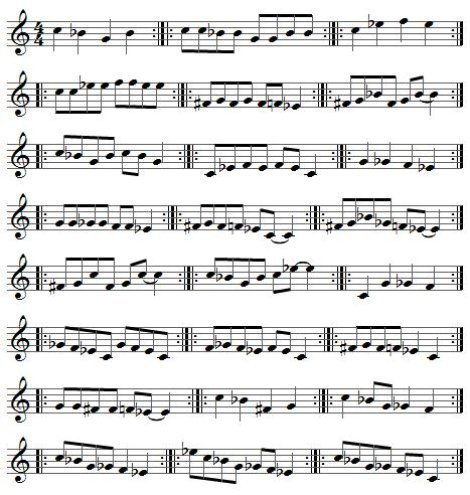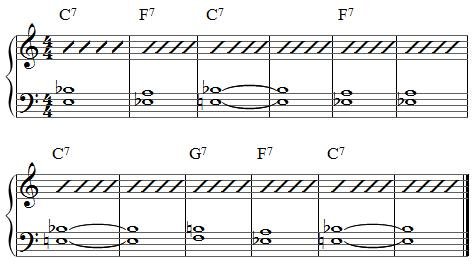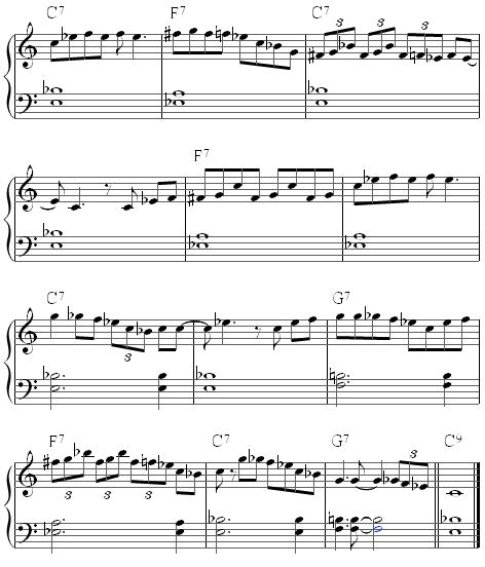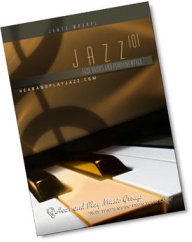Blues Improvisation
using the Blues Scale
Blues Improvisation: Many musicians want to improvise and play spontaneously by ear. A great place to start, with minimal technical or theoretical experience is with the BLUES SCALE
This will focus on the blues scale in the key of C but the principles and practice work in any key.
As a review, the seven notes in this scale are:
- root
- flat 3rd
- 4th
- flat 5th (or sharp 4th - enharmonically the same)
- 5th
- flatted 7th
- root octave

It's best to practice small, several note "snippets" over and over again to get them under your fingers. In most keys they are pretty comfortable (and eventually easy) to play.
Here are a bunch of 1 bar snippets using notes from the blues scale. Each bar is repeated - repeat them over and over, string different ones together and get the feel of phrases and how the scale works.
You can gradually expand them, hook different parts together, make up your own patterns and your own blues improvisation...

This scale, or parts of it, will work with any chord in a 12 bar blues.
In the key of C, even though the C7 has an E natural and the G7 has a B natural, the blues notes of the scale work.
Voicing the Chords in a 12 Bar Blues
(blues improvisation)
In the key of C, the chords in a 12 bar blues are C7 - F7 - G7. We are going to simplify these using 2 notes instead of 4 notes for each chord.

For the C7 chord, we are using the 3rd and the 7th (E & Bb). For the F7 chord, we are using the 7th and 3rd (Eb & A), and for the G7, we are using the 7th and 3rd (F & B).
This example shows how the C7 resolves very smoothly to the F7 using just the 2 notes. This is an example of good voice leading; the notes move by step to the next closest chord member.

This example shows how the C7 resolves very smoothly to the G7 using just the 2 notes. This is another example of good voice leading; the notes moving by step to the next closest chord member.

Here is an example of an entire 12 bar blues pattern using just the 2 notes per chord in the left hand. The right hand uses slash notation which is typical for improvisation or blues improvisation.

Here's an example of an "improvisation" using various "snippets", or patterns from a blues scale.


THE COMPLETE
ONLINE BUSINESS BUILDER
SBI
Hi and Welcome!
Fill out the form below to sign up for the free periodic
Player's Guide Newsletter!
Get tips and ideas about substitute chords, chord progressions and harmonic movement.
What's this???
The Complete book of:
Scales, Chords,
Arpeggios & Cadences
Harmony and Theory:
by Carl Schroeder and Keith Wyatt










New! Comments
Please leave me a comment in the box below.